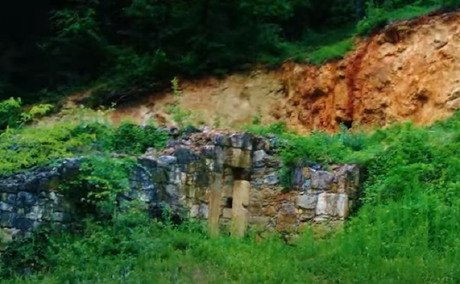Three monks rest near a monastery made of crushed stone: This medieval shrine awaits restoration

The decisive counterattack of the members of the Timok Division during the Battle of Kolubara, fought in November and December 1914, took place right near the remains of this Serbian medieval shrine.
To this day the Kasteljan Monstery lies in ruins, awaiting the day it will be repaired. Otherwise, it has been classified as an immovable clultural good, i.e., a cultural monument that is under the protection of the Institute for Prototection of Monuments of Culture.
A monastery that little is known about
This shrine is located in the area of the village Nemenikuce, on the slopes of the Kosmaj Mountain. The place where the remains of the monastery are located is symbolically called the Monastery, or the Walls by the locals.
In 1963, the protection service went to the field and it was then that the monastery remains were included in the records. Archaeological excavations at this site were carried out in the period from 1969 until 1971.
It was during that period that the remains of the monastery's complex were discovered in the area. In addition to the main church, a dining room and lodgings were found there, as well as the remains of a necropolis.
Analyses established that the original layer of architecture dates from the end of the 13th and the beginning of the 14th century. The second layer is related to the second half of the 14th century.
Unfortunately, to this day, it has not been determined who was the founder of the Kastaljan Monastery. But there are assumptions that it could have been Serbian King Dragutin. More precisely, it is assumed that the shrine was built at the time when he ruled the area.
There is also the assumption that the entire monastery building was renovated by the Serbian despot Stefan Lazarevic. This is evidenced by the remains of decorative elements that have been found, and represent the embodiment of the Moravian school of architecture.
Based on archaeological research, it has been concluded that the monastery was most likely destroyed after the Great Migration of Serbs under Patriarch Arsenij III Carnojevic.
The base of the monastery's church is 6 meters wide and 12 meters long. Its interior was plastered, while crushed stone was used for its construction.
The preserved remains of the frescoes have clearly indicated to experts that this is fresco painting characteristic of the Serbian Middle Ages.
Along with the main monastery church, there are remains of a lodging facility, but also a dining room with a kitchen inside the complex.
It is assumed that the graves of three monks, which were discovered in the church yard, date from the beginning of the 14th century. It has not been determined to whom they belonged, because none of the discovered graves had inscriptions on them.
(Aleksandra Blazevic/Telegraf.rs)
Video: Crna Gora, Jadransko more, 29. decembar
Telegraf.rs zadržava sva prava nad sadržajem. Za preuzimanje sadržaja pogledajte uputstva na stranici Uslovi korišćenja.

